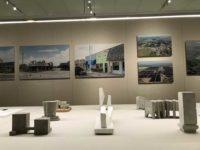Sustainability Heads South of the Border

Sustainability Heads South of the Border
KMD Architects designed a new headquarters for Cinepolis in Morelia, Mexico.
Image: Courtesy KMD Architects

Sustainability Heads South of the Border
Cinepolis’ low-rise buildings will feature rooftop gardens, daylighting through low-emissivity glass, and ventilation from windows that open onto interior courtyards.
Image: Courtesy KMD Architects

Sustainability Heads South of the Border
An office building in Guadalajara designed by TEN Arquitectos.
Image: Courtesy TEN Arquitectos

Sustainability Heads South of the Border
TEN Arquitectos’ 14-story tower features a woven steel-mesh skin that protects it from the elements and reduces the strain on heating and air-conditioning. Behind this screen, operable windows in the glazed curtain wall allow for natural ventilation.
Image: Courtesy TEN Arquitectos












